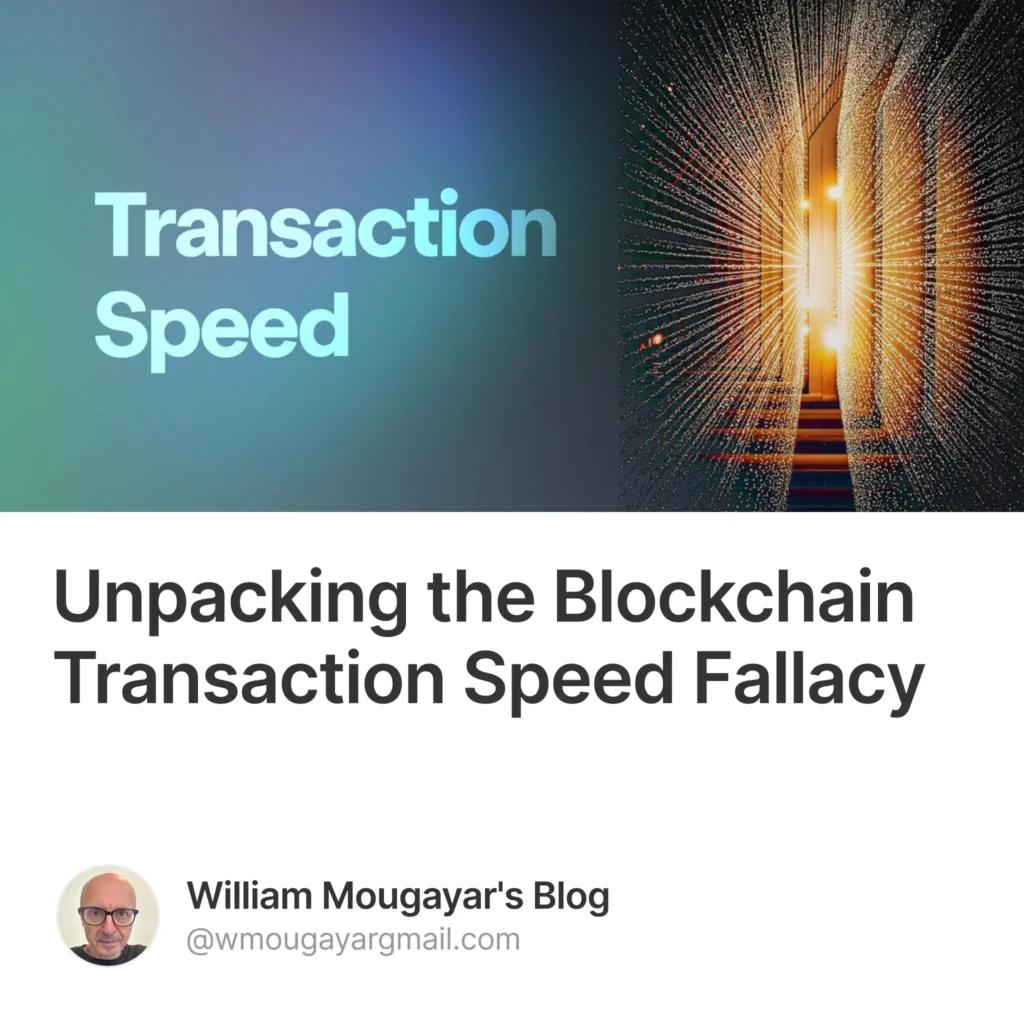Creating a new chain is financially lucrative to founders and investors. Nowadays, you can make money by merely issuing tokens using financial engineering schemes before even gaining usage or proving market fit.
One after another, a new dreamer comes along, thinking they can create a better or faster or cheaper chain than Ethereum.
[Ethereum is used as a reference because it’s the most successful developer-focused blockchain, and by virtue of its leadership position, it gets attacked the most in the market.]
Maybe they can. And that’s the easy part. What’s a lot more challenging is to end-up with a better, richer and more diversified ecosystem than Ethereum’s. And that’s very difficult to get to.
What’s even more difficult is to end up with a blockchain that equally hits the trifecta of decentralization factors across the technical, political and logical spectrum.
So it’s a fallacy to believe that all blockchains are equal when they say it is a blockchain.
Without digressing too much, here is a quick refresher explaining these 3 parameters from Vitalik’s seminal 2017 post, The Meaning of Decentralization.
• Architectural (de)centralization — how many physical computers is a system made up of? How many of those computers can it tolerate breaking down at any single time?
• Political (de)centralization — how many individuals or organizations ultimately control the computers that the system is made up of?
• Logical (de)centralization— does the interface and data structures that the system presents and maintains look more like a single monolithic object, or an amorphous swarm?
Architectural/technical decentralization is arguably the easiest and most visible criteria to hit, followed by the logical step. Political decentralization is the hardest to achieve because it involves letting go of control, a difficult thing to do.
It is peculiar to note that the subject of transaction speeds and costs aren’t even on this decentralization criteria list, because they are not original blockchain features, nor are they truly fundamental to a blockchain. They are rather sub functions with various degrees of acceptable performance.
Yet, many blockchains start describing their features by flaunting their transaction speed and cost and almost never highlight how decentralized their blockchain is.
If all you see or want is transaction speed and low gas fees, and you see them as key success factors for whatever you’re doing, then you’re better off choosing a fast database. At least, if you are prioritizing speed and transaction costs, you are definitely deprioritizing the 3 tenets of blockchain decentralization and missing out on exploiting these features and turning them into benefits for your implementation.
One should ask: if your application is not inheriting decentralization’s fundamental features, what’s the “new new” except for being able to move money on a blockchain?
If transaction speed is the solution, what is the problem? Let’s dig in.
Here is the whole spectrum of transactions per second (TPS) speed requirements across some known financial industry sectors, intermixed with blockchain performance numbers.

Key numbers in the comparison:
-
Nasdaq (Avg: 100,000, Peak: 500,000)
-
Visa (Avg: 1,700, Peak: 65,000)
-
Solana (65,000 TPS)
-
Lightning Network (1,000,000+ TPS)
-
Ethereum + Rollups (expected 100,000+ TPS)
You will note that only Nasdaq and Visa are considered to be in the range of high-frequency transaction processing at their peak.
Unless you’re competing head on with Visa or the Nasdaq, or aiming to process microtransactions, you don’t really need an ultra fast or ultra cheap blockchain.
There is a vast spectrum of opportunities below Nasdaq-level transaction speed where exploring the application of blockchain’s features are not limited by such speeds. Arguably, this segment might also be where the largest opportunities lie.
If transaction speed was the panacea, the Lightning Network at 1 million TPS, far exceeding Visa, would be widely adopted, but that’s not the case.
Contrary to the marketing noise on that topic, speed is not the key success factor to your blockchain-based business model.
Let’s make sure we are focused on what makes blockchains unique, and concentrate on developing the applications that were not possible without the blockchain.
Transaction speed is certainly not the most important blockchain feature.

